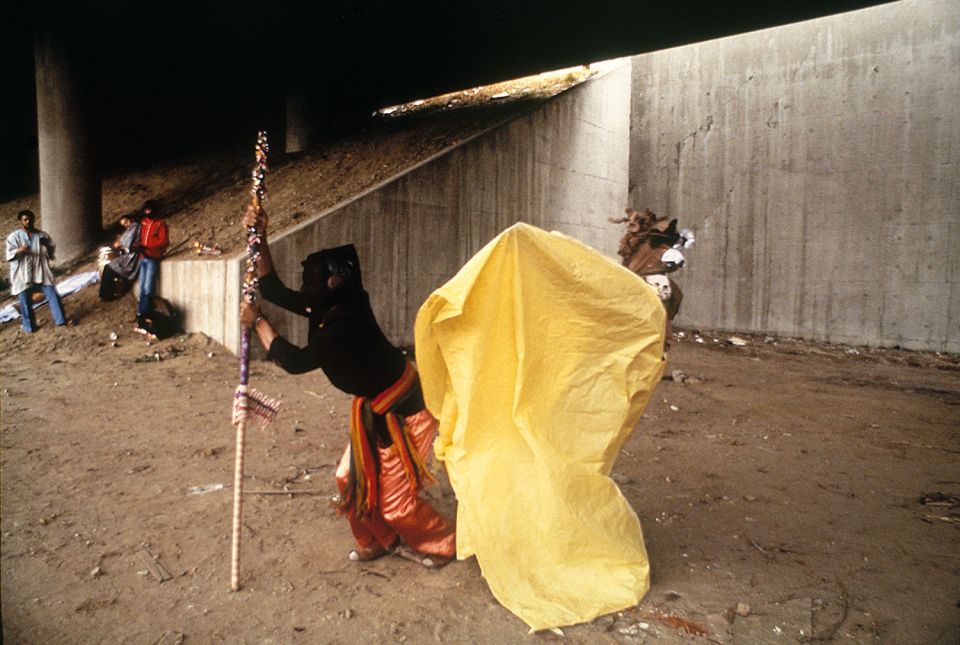While dance and visual arts tend to exist under the same ‘arts’ category, it is not very common to consider the dance that you see on stage to have much in common with a stationary installation of a stretched pair of tights in a gallery. For starters, one is static the other is active. Last Wednesday in a seminar room at the Henry Moore Institute, Sharon Watson, Artistic Director at Phoenix Dance Theatre, went against such a notion by showing that dance and the visual arts do have the ability to work with and respond to each other in an incredibly moving manner.
Watson began the evening responding to the title of Senga Nengudi’s exhibition From Roots to Wings by explaining a bit about her personal journey that brought her to be the groundbreaking choreographer that she is today. What she revealed first was the significance of early beginnings, of being made aware of art from a young age, and most importantly, being inspired by great teaching whilst you are young, but also throughout life. Sharon mentioned the valuable lessons she learnt from one of her P.E teachers, Nadine Senior in particular, who she says “galvanized a vision” that encouraged her to keep dancing and make a life out of it. Having great teaching available in other words helped her grow out from her “roots” to find her “wings”.
If you haven’t heard of the 37 year old Leeds based Phoenix Dance Theatre company they are certainly a group that you should be watching and talking about. At the minute, they’re touring their incredibly successful, Windrush: Movement of the People, a beautifully moving, energetic and extremely pertinent show that details both the hardships that Caribbean populations faced upon their arrival in the United Kingdom, but also the strong lasting relationships and sense of community that they built here over time. Sharon discussed a number of other successful performances at her talk on Wednesday such as Ghost Peloton, a project that brought both dancers and cyclists together to create a spectacular light show that marked the 2014 Tour de France. Another fascinating performance was TearFall, where Watson worked with biomedical researchers from the Welcome Trust to create a dance piece that could present the science that lies behind the creation of tears. Collaborating with people that may conventionally be considered as separate from the dance world is very much a recurring theme for Watson.
While Sharon’s talk was of course incredibly fascinating to listen to what really made this event special was the on the spot performance by Phoenix dancer Carmen Vazquez Marfil, which responded to Nengudi’s exhibition, and in particular the sculptural stretched tights that are pinned to the floor and the surrounding walls. Sharon determined that it would be intriguing to get Carmen to respond to this specific work as there was something telling about how the tights were emblematic of freedom but an element of constraint too. Under Sharon’s directions, Carmen responded through movement using a large table as her prop in the small space to convey this sense of an existing boundary. After a couple of tries, within 5 minutes Carmen was performing a stunning two-minute piece that Sharon named The Stranger in the Room. The beauty of the dance was its spontaneity, the fact that the dancer was able to show an element of liberation, by being able to move briskly and extend her limbs, but also an element of restriction, by stopping her movements short to emphasise the strange feeling of being confined by your surrounding space.
Carmen’s dance marked a wonderful close to Sharon’s thought-provoking talk, and if it proves anything at all it is that Phoenix is a forward thinking dance company that really does challenge the most conventional perceptions of the meaning of dance and what it has the ability to do as an art medium.
Fiona Holland
Image Courtesy of the Henry Moore Institute

